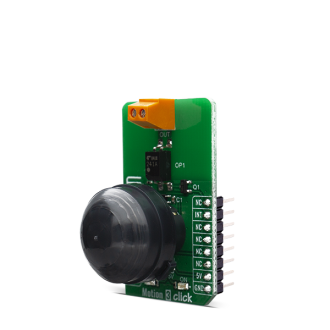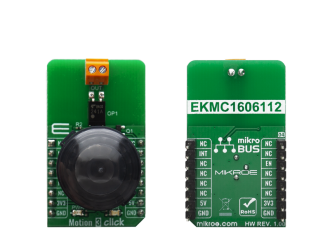
We strongly encourage users to use Package manager for sharing their code on Libstock website, because it boosts your efficiency and leaves the end user with no room for error. [more info]

Rating:
Author: MIKROE
Last Updated: 2020-04-08
Package Version: 1.0.0.0
mikroSDK Library: 1.0.0.0
Category: Motion
Downloaded: 4001 times
Not followed.
License: MIT license
Motion 3 Click is a Click board based on EKMC1606112, PIR motion sensor from Panasonic Corporation that's used as human motion detector.
Do you want to subscribe in order to receive notifications regarding "Motion 3 click" changes.
Do you want to unsubscribe in order to stop receiving notifications regarding "Motion 3 click" changes.
Do you want to report abuse regarding "Motion 3 click".


Library Description
Key functions:
uint8_t motion3_get_int ( void ) - Function for getting void motion3_set_en_pin ( uint8_t state ) The application is composed of three sections
void application_task ( )
{
uint8_t int_status;
int_status = motion3_get_int( );
if ( int_status ! = MOTION3_INTERRUPT_NOT_DETECT )
{
mikrobus_logWrite( "Motion detected", _LOG_LINE ) ;
while ( int_status ! = MOTION3_INTERRUPT_NOT_DETECT )
{
int_status = motion3_get_int( );
}
mikrobus_logWrite( "Motion wait", _LOG_LINE ) ;
}
}
Other
Additional notes and
Depending on the development board you are using, you may need USB UART click,